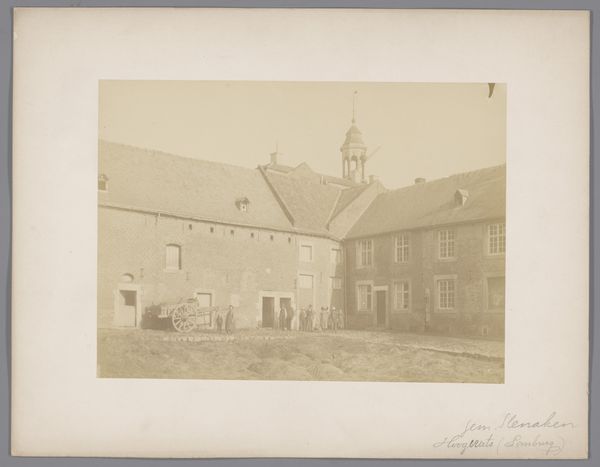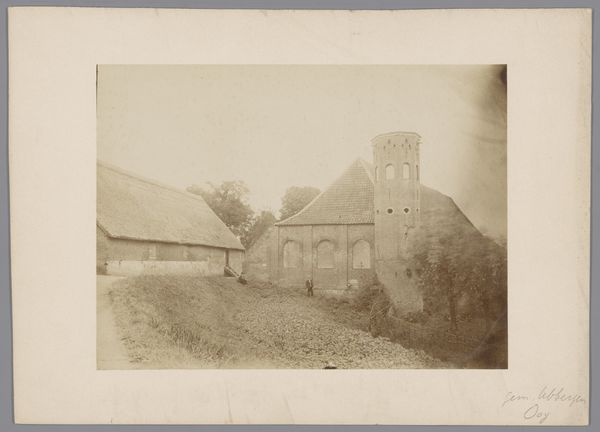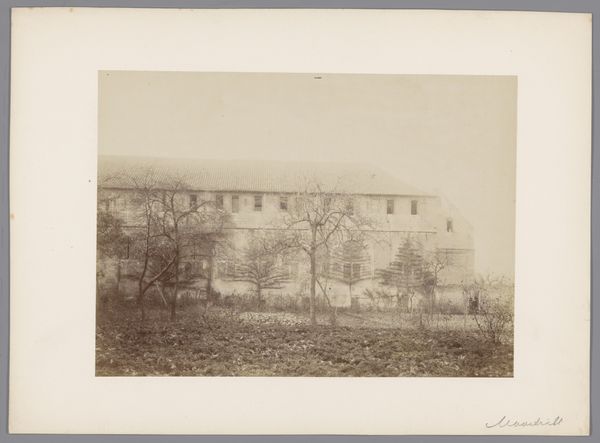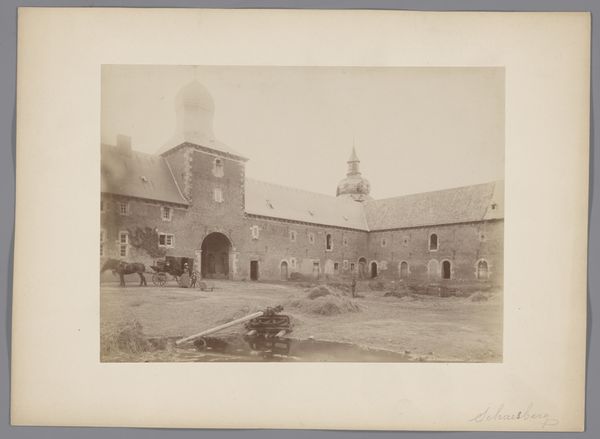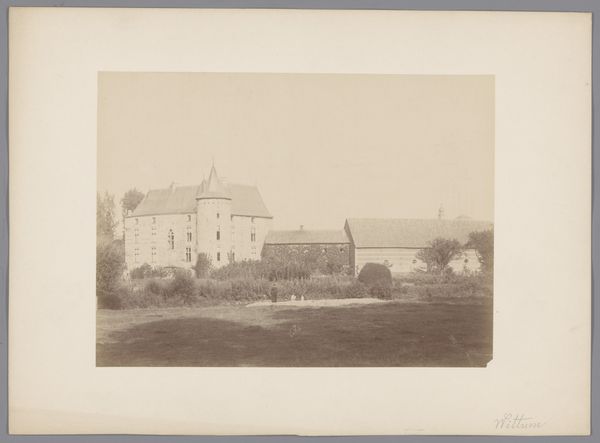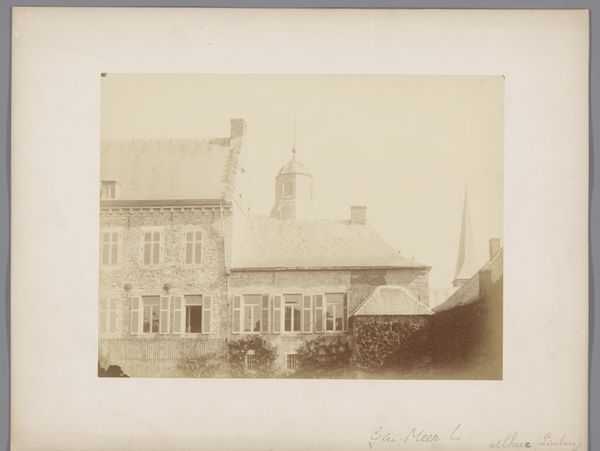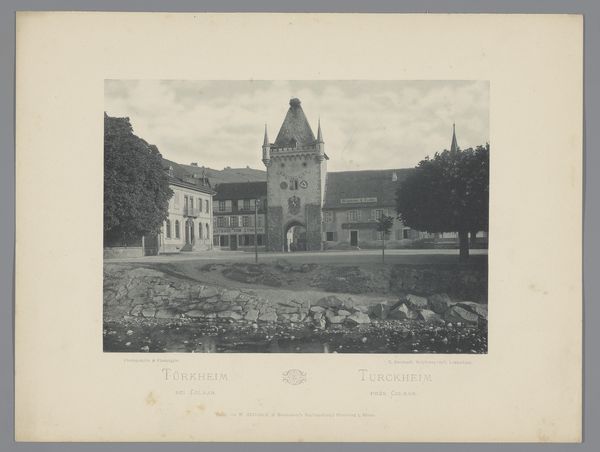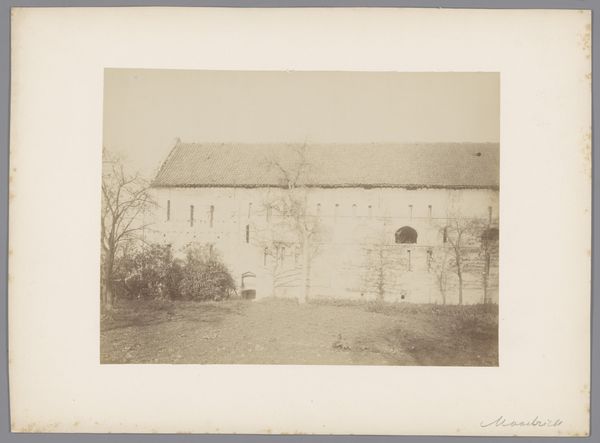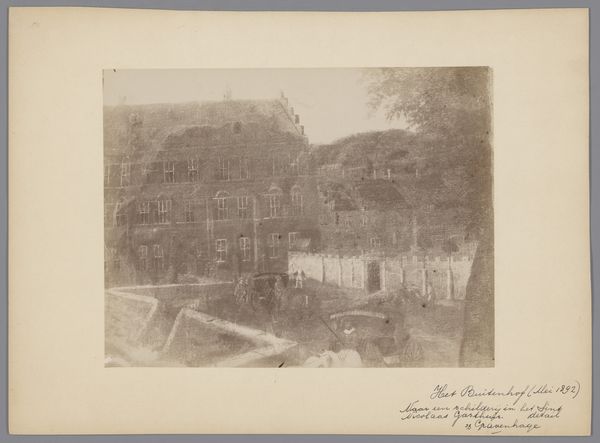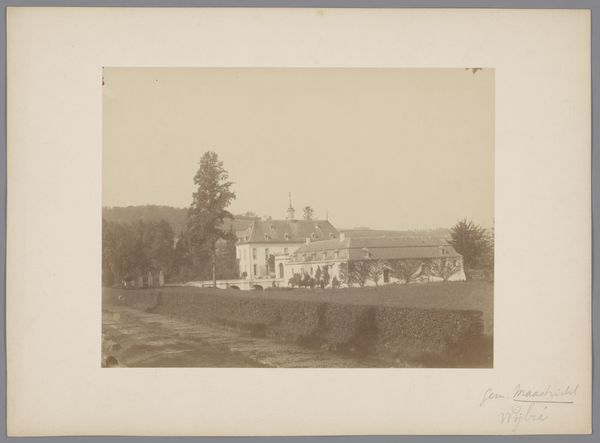
Dimensions: height 166 mm, width 231 mm
Copyright: Rijks Museum: Open Domain
Editor: This photograph, titled "Gezicht op het voormalige klooster te Hoogcruts," taken sometime between 1890 and 1920 by an anonymous photographer from Monumentenzorg, has a certain stillness about it. It looks like an image faded by the passing of time. What historical layers do you see in this image? Curator: That stillness is powerful, isn't it? It speaks to the complex history of religious spaces and their role in shaping community and power dynamics. Considering the time period, we might examine this image through the lens of secularization and the evolving function of religious institutions. What impact do you think the shift from monastery to, perhaps, a historical monument would have on local memory and identity? Editor: It’s fascinating to think about this space repurposed. I guess the shift from sacred to secular recontextualizes power structures. It seems to mirror the broader societal changes and how we grapple with legacies of religious authority. What do you mean by that? Curator: The transition hints at a re-evaluation of societal values and raises complex issues around the ownership and interpretation of the past. Think about how we memorialize—or perhaps, fail to memorialize—those marginalized by these very institutions. Whose stories are missing from this idyllic scene? Editor: That’s an interesting perspective! It really makes me think about the silences within the image itself, the narratives not immediately visible. It highlights the need for intersectional understanding. Thank you. Curator: Absolutely. Considering art as a site of ongoing dialogue encourages us to actively participate in uncovering and interpreting these important social narratives.
Comments
No comments
Be the first to comment and join the conversation on the ultimate creative platform.
